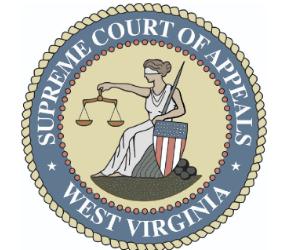MORGANTOWN, W.Va. — Two West Virginia University experts are calling a proposal from the Environmental Protection Agency to make drinking water safer by replacing all water service lines containing lead in the United States within 10 years “historic” and “proactive.”
Daniel Renfrew, professor of anthropology and chair of the Department of Sociology and Anthropology in the WVU Eberly College of Arts and Sciences, has studied Uruguay’s lead epidemic.
Jason Hubbart, associate dean of research and professor of physical hydrology in the School of Natural Resources at the WVU Davis College of Agriculture, Natural Resources and Design, serves as West Virginia’s ambassador to the World Bank Global Water Partnership and, for the past three years, has led a drinking water testing and community engagement program.
Renfrew and Hubbart are available to discuss why the EPA’s proposal is important, who it affects and whether replacing lead pipes may be less costly than failing to do so.
Quotes:
“The Biden Administration’s proposed revision to the lead and copper rule is welcome and historic. It aims to remedy the environmental injustices of ongoing lead in water supplies and prevent future Flint-style community exposures. The new rules would eliminate the millions of remaining lead water service connections around the country within the next 10 years, lowering the allowable threshold of lead in drinking water from 15 to 10 micrograms per liter.
“Cities like Flint and Benton Harbor, Michigan, Washington, Newark, New Jersey and Clarksburg, West Virginia have experienced devastating health problems from elevated lead levels in the water supply. A Reuters investigation revealed over 3,000 U.S. community ‘hot spots’ with even graver cases of lead poisoning than those found during the peak of Flint’s water crisis.
“It’s true the cost of complete lead pipe abatement may exceed $100 billion. Some critics of the proposed rule revision instead support a long-dominant, ‘pragmatic’ harm reduction approach of targeted screenings and hot spot remediation. The trouble with this approach is that most of the hot spots, and the people getting sick, remain invisible. As scientists have demonstrated for decades, there is no safe level of lead exposure.
“Cost-benefit analyses have identified long-term economic benefits from lead abatement. While lead exposure disproportionately affects the urban poor and racialized or immigrant minorities, its economic burden is universal, increasing education, health care and criminal justice costs for all taxpayers.
“The research on lead poisoning that I conducted in Uruguay dovetails with what other critical studies have demonstrated in the United States and across the world. Meaningful policy action to remediate lead is most often achieved when contamination is understood as a universal risk. When lead exposure is presented as the problem of a subgroup — the poor, a racial minority, immigrants, etc. — then it becomes easier to make the issue invisible.” — Daniel Renfrew, chair and professor of anthropology, WVU Eberly College of Arts and Sciences
“The proposed ruling to replace lead-containing water service lines addresses historical shortcomings in our national infrastructure. However, the infrastructure overhaul burden may exceed local budget capabilities, making additional federal financial backing imperative.
“As an example, as much as 3% of West Virginia’s water service lines may need to be replaced. One percent of the state’s service lines have been confirmed as lead-containing, while 62% of the total service lines are composed of ‘unknown materials.’ Three percent may seem relatively low, but actualized replacement costs could be high. The financial and labor burden of identifying, replacing and rehabilitating these lines may fall heavily on local authorities.
“In my work with communities, I have encountered a general lack of knowledge about where lead pipes exist and the current state of drinking water quality. The proposed rule revision is a proactive step toward safeguarding drinking water quality and public health with significant benefits for many communities in states like West Virginia, especially for vulnerable groups like children and pregnant women.
“The regulation has significant potential to fortify public health and enhance infrastructure reliability. It also underscores the urgency for a collaborative effort between federal and local entities. Federal financial aid will be crucial to alleviating the strain on local authorities and ensuring comprehensive implementation of these vital infrastructure improvements.” — Jason Hubbart, associate dean of research and professor of physical hydrology, WVU Davis College of Agriculture, Natural Resources and Design
Additional Resources:
PHOTO: Daniel Renfrew






